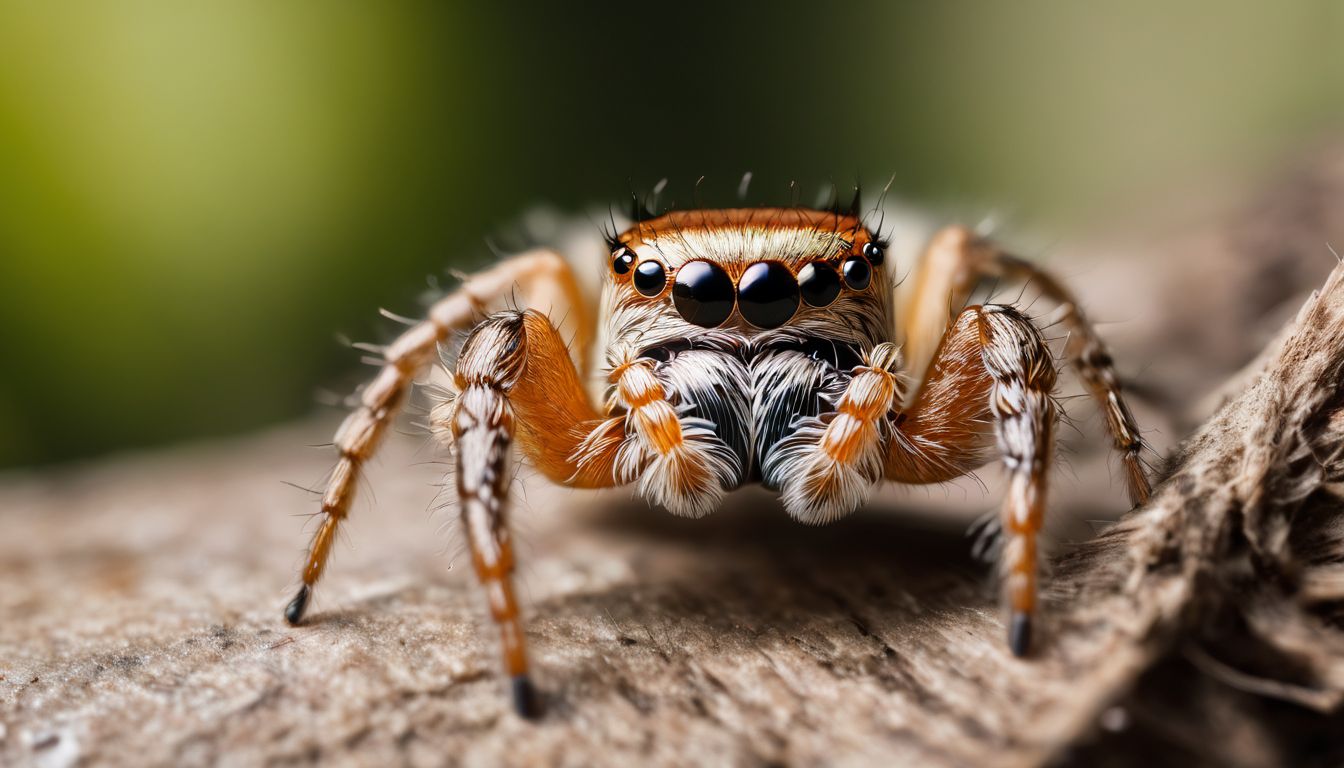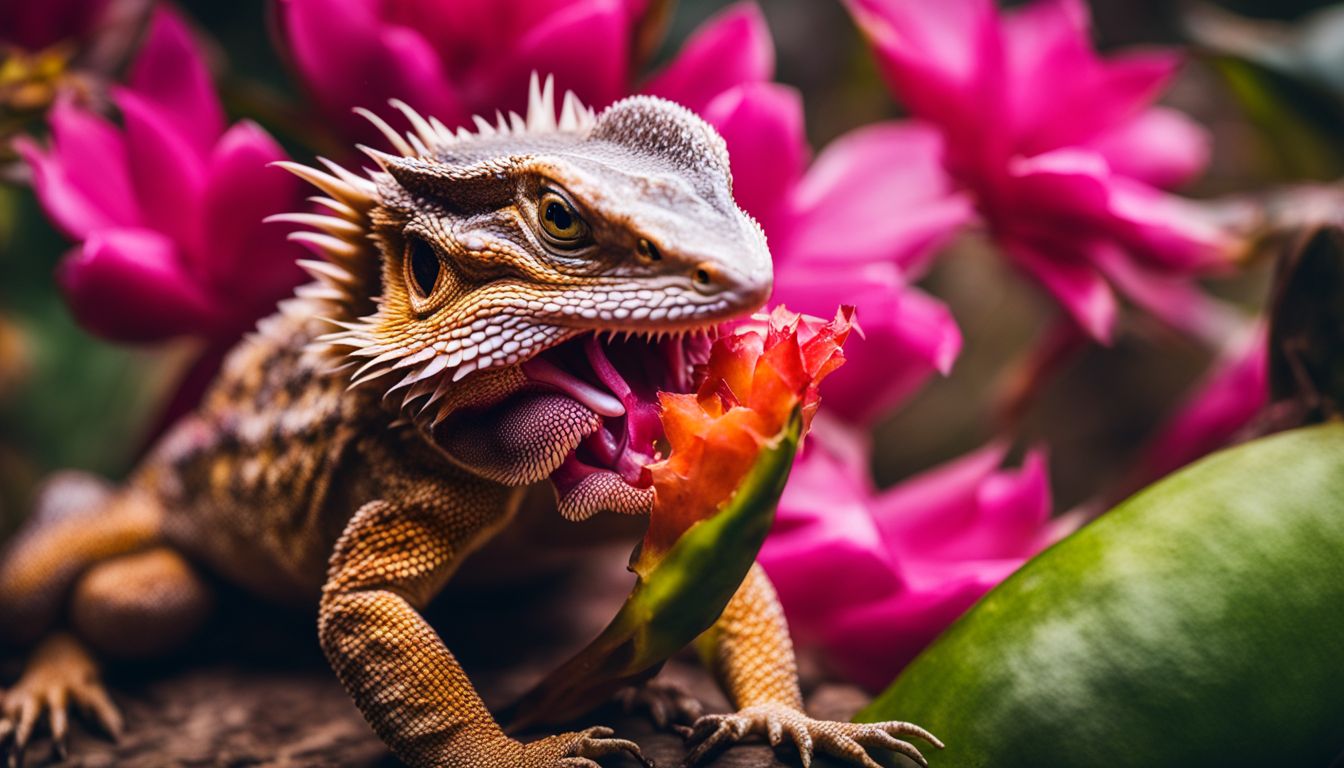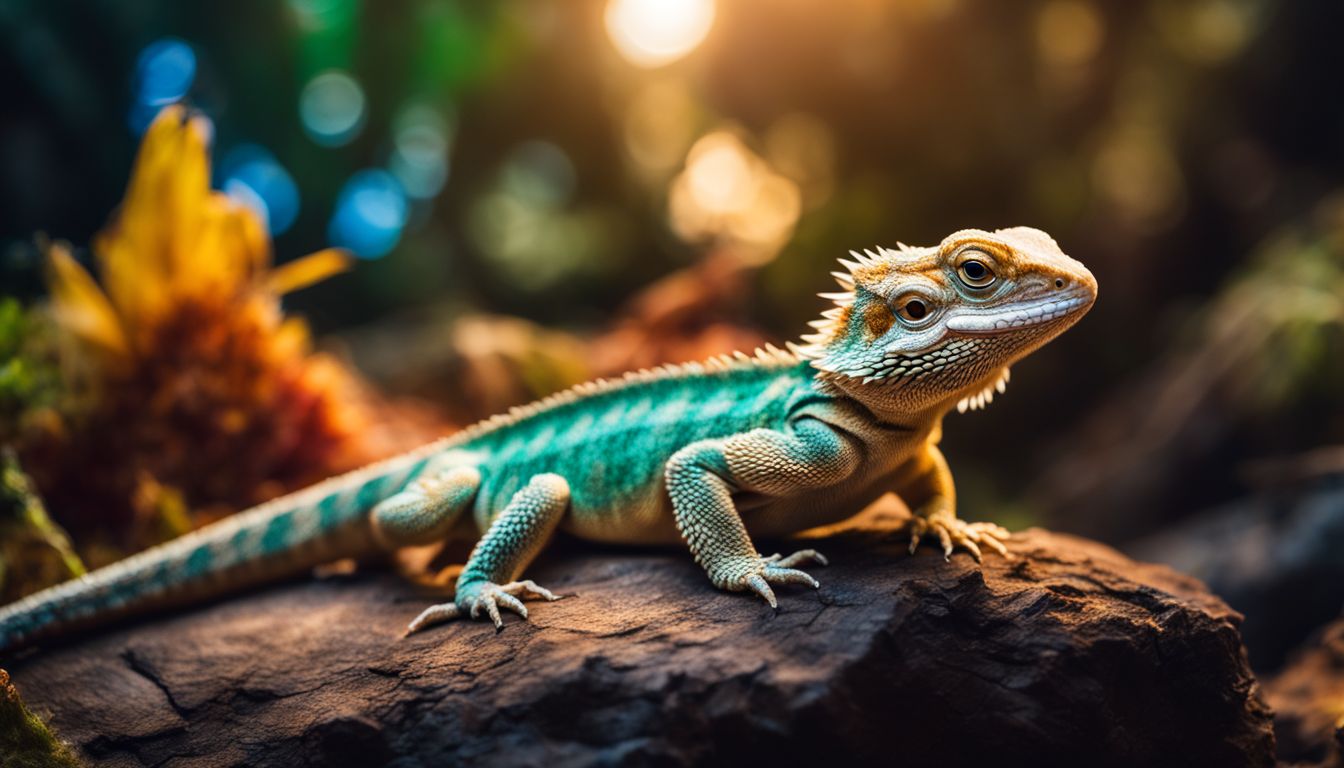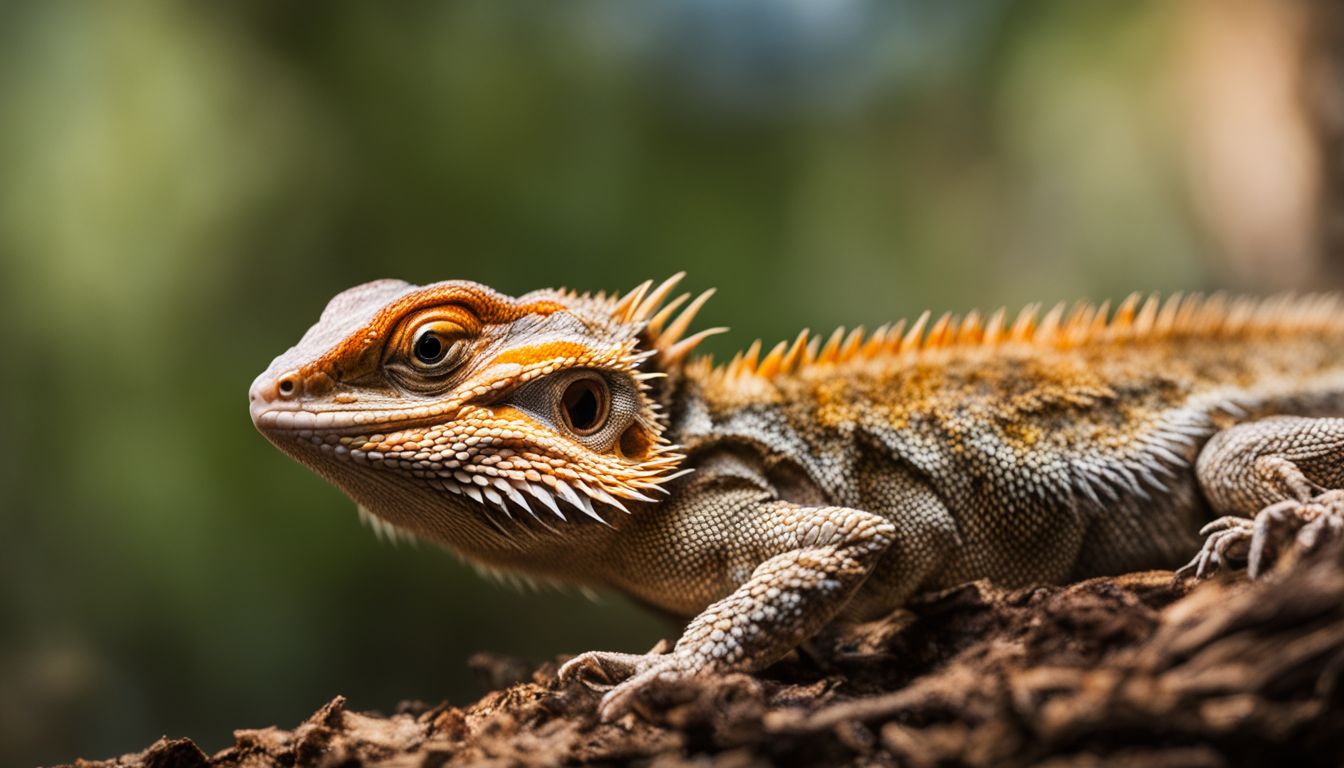Are you scratching your head about what to feed your jumping spider buddy? Jumping spiders need living insects to thrive, just like in the wild. Our article is packed with easy-to-follow advice on satisfying their hunger and keeping them happy and healthy.
Dive in for some juicy tips!
Key Takeaways
- Jumping spiders need live insects like flies, crickets, grasshoppers, and mealworms to thrive as they are active hunters that require protein and essential nutrients for a healthy diet.
- Feeding pre – killed insects is also an option, but live prey stimulates their hunting instincts and provides a more natural feeding experience.
- Supplemental treats such as soft fruits can be given occasionally to provide variety in their diet, but sugary solutions like honey should be avoided as they can lead to health issues for jumping spiders.
Understanding the Nutritional Needs of Jumping Spiders
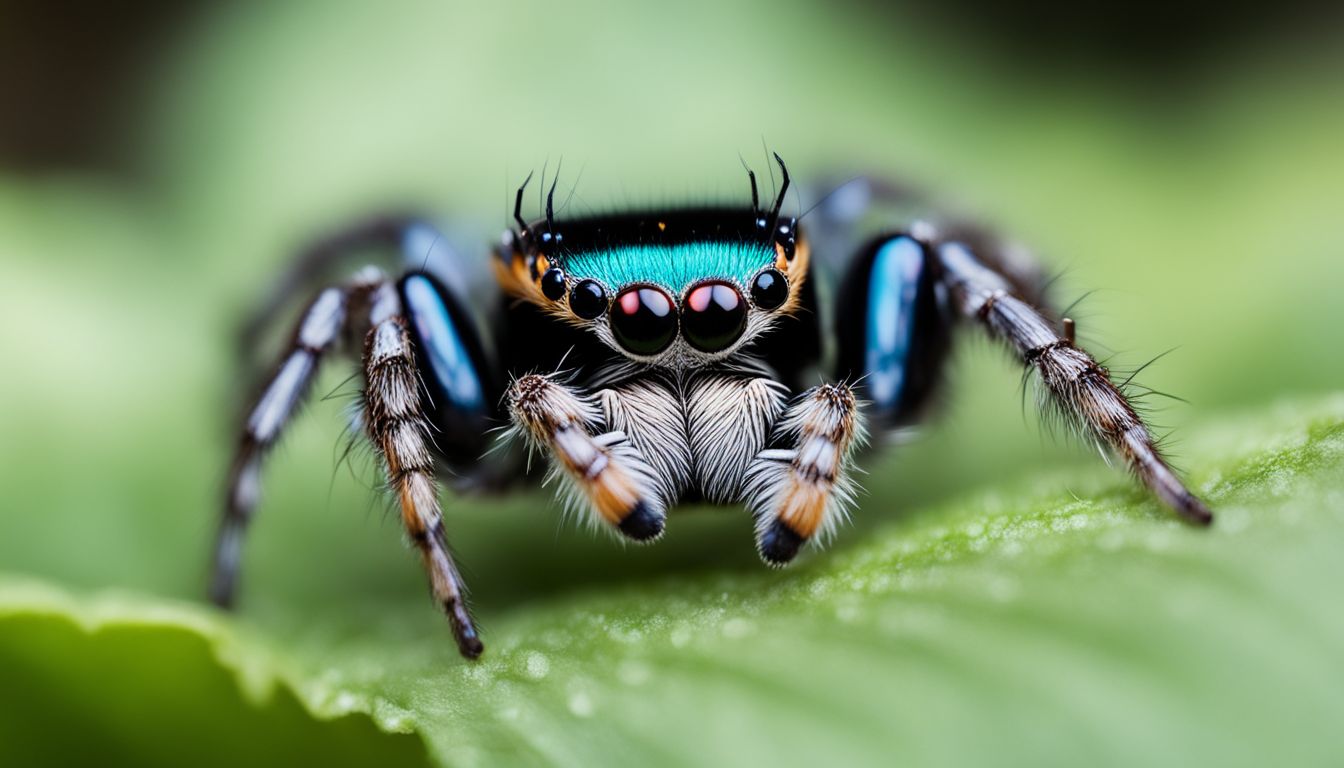
Jumping spiders need the right foods to be healthy and active. They are hunters that look for prey during the day. These little guys eat lots of insects and bugs which give them protein and nutrients.
This helps their bodies grow strong, stay energized, and heal any hurts.
These spiders do not make webs to catch food like other spiders might. Instead, they chase down what they want to eat! To keep your jumping spider happy, you should feed it a mix of different bugs from pet stores or ones safe from outdoors.
Feeding them this way makes sure they get all the good stuff their bodies need just like they would in nature.
Preferred Prey for Your Arachnid Companion
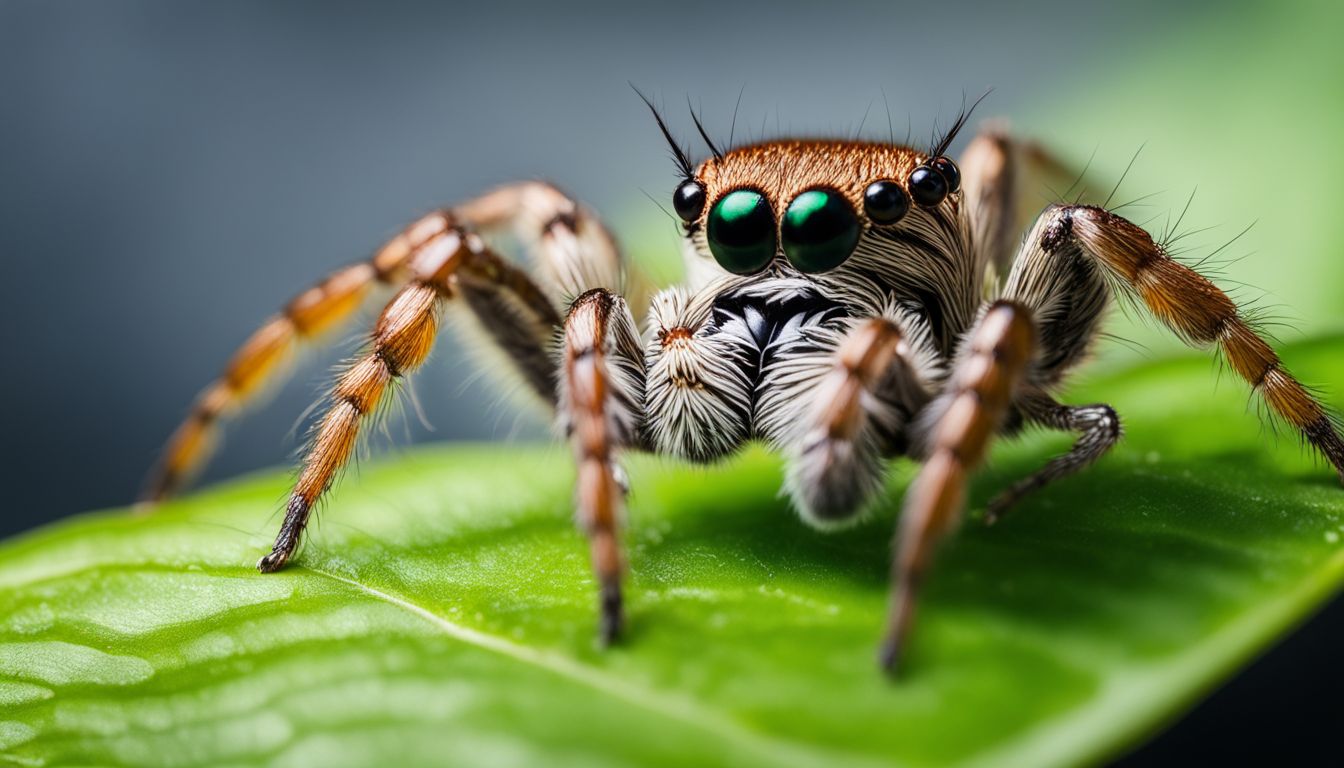
Flies and mosquitoes, crickets and grasshoppers, as well as mealworms and waxworms are all excellent options for feeding your jumping spider. These small prey items provide the necessary nutrition for your arachnid companion to thrive.
Flies and Mosquitoes
Jumping spiders love to munch on flies and mosquitoes. These insects are a perfect size for your eight-legged friend. They are also full of the stuff that spiders need to grow strong and stay healthy.
Evarcha culicivora, a kind of jumping spider, is really good at hunting down mosquitoes that have just had a blood meal. This makes them super nutritious for the spiders.
In Kenya, there’s even a jumping spider that uses its smart eyes to spot mosquitoes with blood-filled bellies. It sees their red tummies and goes after them as food! Smells can make these clever hunters change what color they like best when looking for snacks like flies and mosquitoes.
Now let’s talk about other bugs that jumping spiders eat, like crickets and grasshoppers.
Crickets and Grasshoppers
Crickets are a top food choice for jumping spiders. These insects have lots of protein, making them great for a spider’s diet. Many pet stores sell crickets because they are good for pets like jumping spiders and lizards too.
Grasshoppers also work well as spider food.
Your eight-legged friend will enjoy chasing these jumpy critters around their home. Feeding your spider live crickets can help it keep up its hunting skills. Now let’s talk about another yummy snack: mealworms and waxworms!
Mealworms and Waxworms
After considering crickets and grasshoppers as prey options, it’s important to note that mealworms and waxworms also play a significant role in the diet of jumping spiders. These worms provide essential nutrients and protein for these arachnids, making them popular choices among pet owners.
However, when feeding mealworms to jumping spiders, especially while they are molting, it is important to do so sparingly. While mealworms are nutritious treats for jumping spiders, they should not be the sole food source due to their low calcium content and high phosphorus levels which can affect the spider’s health if consumed excessively.
Overall, offering a varied diet that includes other suitable prey options alongside mealworms and waxworms ensures that your jumping spider receives a well-balanced diet for optimal health.
Feeding Techniques for Jumping Spiders
Introducing live prey to your jumping spider can stimulate their hunting instincts, while pre-killed options can also be provided for convenience. To learn more about the best feeding techniques for your arachnid companion, read on.
Live Prey Introduction
Jumping spiders are active hunters and prefer live prey. They enjoy feeding on small insects like flies, crickets, grasshoppers, and mealworms. When offering live prey to your jumping spider, make sure the insects are appropriately sized for your spider to handle easily.
Remember that jumping spiders rely on their keen eyesight to detect and catch their prey through quick movements. It’s important to provide a variety of live food options to ensure a healthy diet for your arachnid companion.
In captivity, you can offer feeder insects such as fruit flies regularly to keep your jumping spider well-fed and thriving. Additionally, consider observing the hunting behavior of your spiderling after introducing live prey; this can be an exciting experience that helps you understand their natural predatory instincts better.
Pre-Killed Options
Jumping spiders can eat pre-killed insects such as crickets, flies, roaches, mealworms, and wax worms. This means you don’t always have to feed them live prey; they’ll still enjoy their meal if the bug is already dead.
Some examples of pre-killed options for jumping spiders include dead insects like fruit flies or mealworms. Offering pre-killed prey is a convenient way to ensure your salticidae’s nutritional needs are met without needing to deal with live bugs.
Occasional Treats and Supplemental Feeding
Offering your jumping spider occasional treats like soft fruits or honey can provide a variety in their diet, but be sure to do so in moderation to maintain a balanced nutrition for your arachnid friend.
To learn more about the nutritional needs of jumping spiders and how to properly feed them, keep reading!
Soft Fruits
Jumping spiders can enjoy soft fruits as an occasional treat. Soft fruits like ripe mangoes, strawberries, and papayas are rich in nutrients and have a softer texture which makes them suitable for the spiders to consume.
These fruits provide essential vitamins and sugars that can supplement the spider’s diet, contributing to their overall health.
Soft fruits such as these may be offered sparingly along with the spider’s main diet of insects. It’s important to remember that while soft fruits can be a nice addition to a jumping spider’s diet, they should not replace the primary source of food which consists of live insects like flies, crickets, or mealworms.
Honey or Sugary Solutions
Jumping spiders, including spiderlings, are mostly carnivorous and don’t thrive on sugary solutions like honey. While they occasionally consume nectar or plant fluids as a dietary supplement, it’s not their primary source of nutrition.
Feeding on such sugary solutions can lead to health issues for jumping spiders. Therefore, it’s crucial to avoid offering honey or other sweet substances as regular food for your arachnid companion.
Instead, focus on providing a diet rich in suitable prey such as flies, mosquitoes, crickets, grasshoppers, mealworms, and waxworms to ensure their nutritional needs are met.
Conclusion
In conclusion, feeding your jumping spider a varied diet of live insects is crucial for its health. Suitable options include crickets, flies, roaches, mealworms, and wax worms. While they are skilled hunters, providing different feeder insects ensures their nutritional needs are met.
Occasionally offering soft fruits or honey can also be a treat for your arachnid companion. Always ensure to provide a diverse and healthy diet for the well-being of your jumping spider.
Given that the recommended internal link provided is not highly relevant to the specific outlines of Blog Topic 2, the outline remains unchanged as none of the sections are suitable for the inclusion of the provided link.
The outline for Blog Topic 2 stays the same because the suggested link doesn’t fit into any of the sections. The information we have is great for beginners and covers what to feed jumping spiders.
It’s all about understanding their nutritional needs and preferred prey, as well as feeding techniques and occasional treats. So, let’s keep it simple and clear for everyone to understand.
Jumping spiders mainly eat insects like flies, crickets, moths, and nectar. They are carnivores that prefer live prey over dead ones and use venom to paralyze their food before eating them.
Pet shops offer a variety of crickets in different sizes that can be fed to these spiders for a healthier diet. Remember that they don’t eat dead insects; they always go after live food options.
If you’re curious about what other fascinating spiders might be roaming around, check out our insights on the variety of spiders in Hawaii.
FAQs
1. What do jumping spiders like to eat?
Jumping spiders love eating small bugs that they hunt themselves, as they are predating obligate carnivores that need meat to live.
2. Can jumping spiders eat anything other than bugs?
Although most jumping spiders just eat insects, one kind called Bagheera kiplingi is special because it also eats plant parts making it sort of an omnivore.
3. When should I feed my pet jumping spider?
You should give food to your jumping spider during the day because that’s when they’re active and ready to hunt for their food sources.
4. Do jumping spiders only eat live food?
Yes! Jumping spiders like catching their own live prey, so giving them things like flies or small crickets is best for their health.

